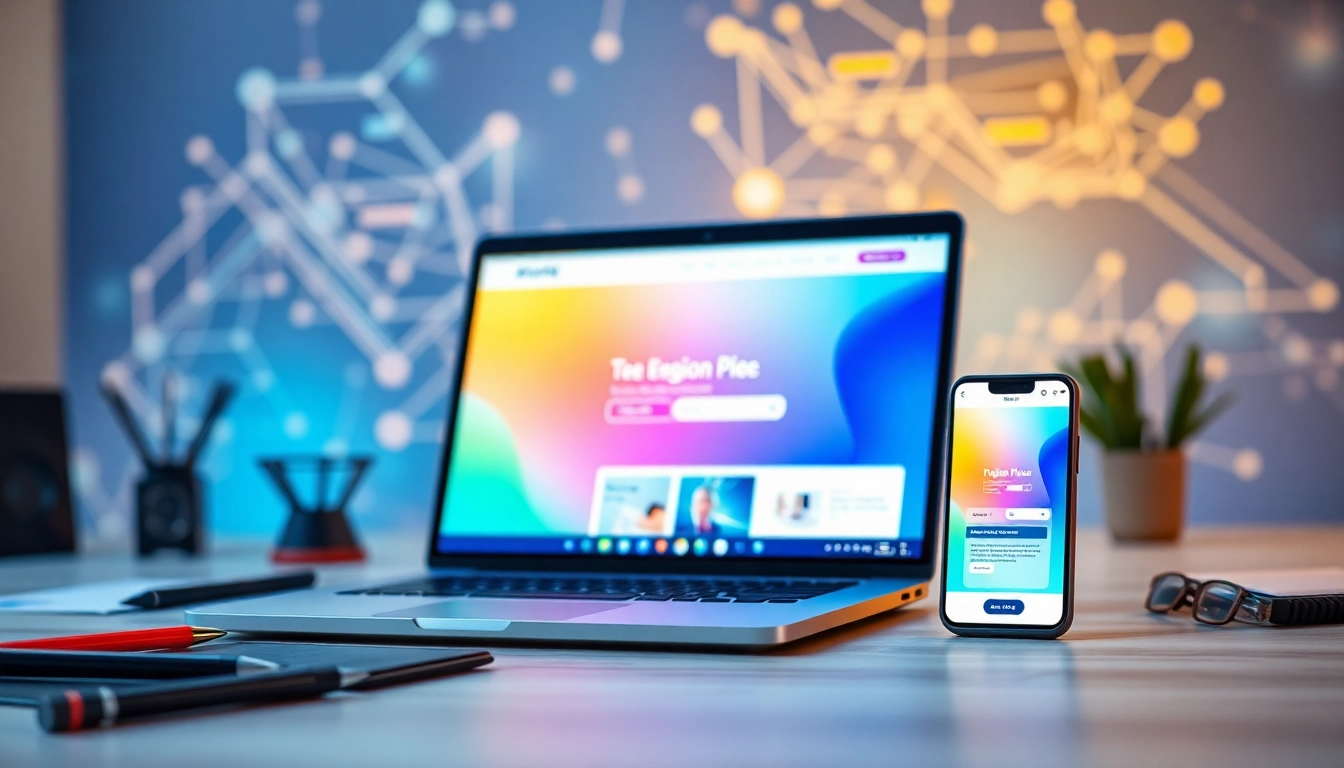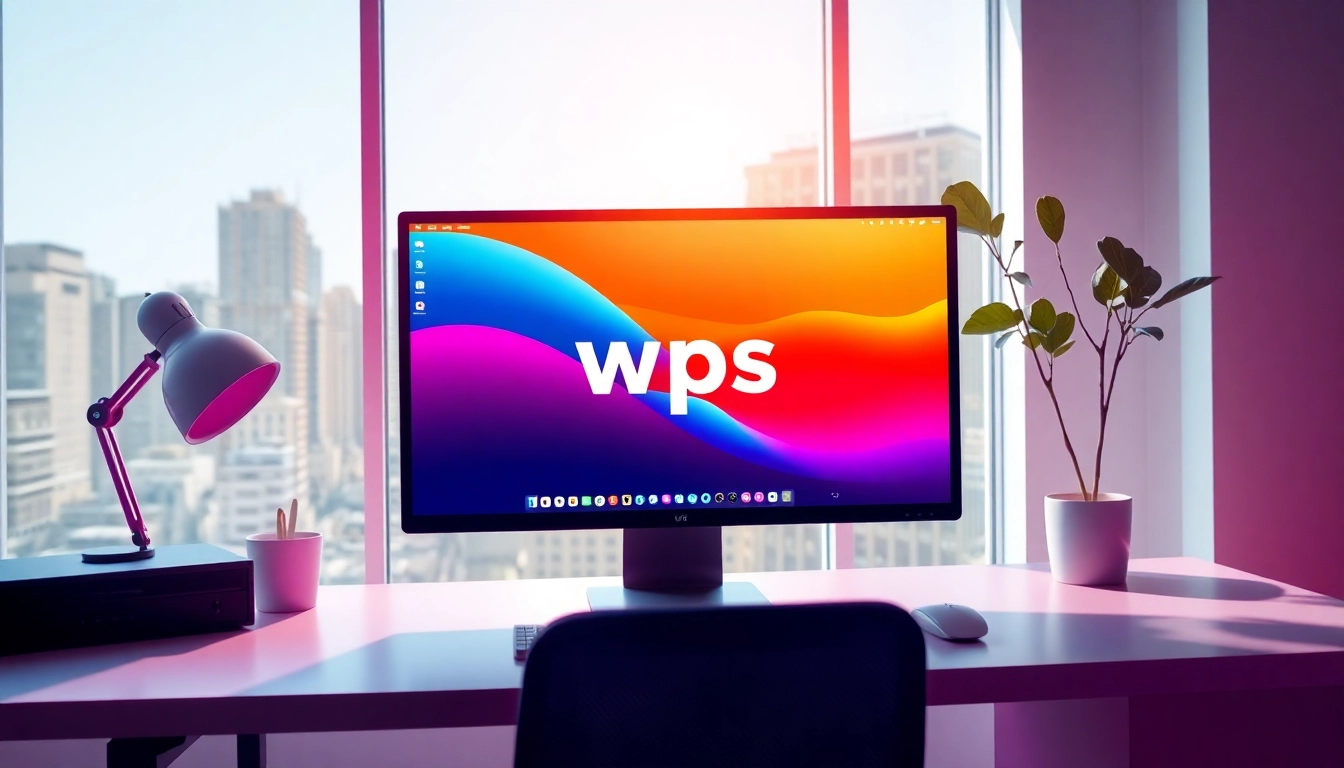Introduction to Website Design
In the vast digital landscape, effective website design is a critical component for businesses aiming to establish a robust online presence. It serves as the first point of interaction between a brand and its customers, making it essential to create a lasting impression. A well-designed website not only attracts visitors but also enhances user engagement, boosts credibility, and drives conversions. Understanding website design involves more than just aesthetics; it encompasses various disciplines, including user experience (UX), user interface (UI), and content management.
What is Website Design?
Website design refers to the process of planning and creating elements of a website. This includes layout, content production, and graphic design. It incorporates both the visual aesthetics and the functional aspects of the site. Well-executed website design blends these aspects harmoniously, allowing users to navigate seamlessly while finding the information they seek quickly. Core components of effective website design include design layout, imagery, typography, and color schemes, all tailored to meet specific user needs.
The Importance of Website Design for Businesses
For businesses, especially small to medium enterprises, a well-designed website is a key asset. It acts as a digital storefront that can attract customers and provide essential brand information. A report shows that nearly 75% of users base their opinions of a company’s credibility on its website design. Therefore, a visually appealing website can cultivate trust and enhance user satisfaction, leading to higher conversion rates. Moreover, search engine optimization (SEO) is intricately tied to website design; search engines favor well-structured and user-friendly websites, ultimately improving visibility on search engine results pages (SERPs).
Common Misconceptions about Website Design
Despite its significance, several misconceptions regarding website design persist. Many believe that a flashy website with numerous animations and graphics is more effective, but such features can lead to slower loading times and potentially frustrate users. Additionally, some consider website design a one-time effort rather than an ongoing process. In reality, a good website requires regular updates and adjustments based on user feedback and changing technology trends to maintain relevance and functionality. Understanding these misconceptions is vital to creating and maintaining effective website design.
Fundamentals of Effective Website Design
Essential Features of Modern Website Design
Modern website design must incorporate several essential features that enhance usability and user engagement. These features include:
- Responsive Design: A responsive design ensures websites are accessible on various devices, from desktops to smartphones. This flexibility is critical as a significant portion of web traffic now comes from mobile devices.
- User-Friendly Navigation: A clear and intuitive navigation structure allows users to find information effortlessly. This includes implementing drop-down menus, search bars, and breadcrumb links to enhance the user journey.
- Fast Loading Times: Websites must load quickly to retain users. Research indicates that if a page takes longer than three seconds to load, many users will abandon the site.
- High-Quality Content: Content is crucial for engaging users. This includes not only written text but also high-quality images and videos that enhance the user experience.
- Clear Calls to Action (CTAs): Effective CTAs guide users towards specific actions, whether that’s subscribing to a newsletter, making a purchase, or contacting the business.
Understanding User Experience in Website Design
User experience (UX) is a critical aspect of website design that focuses on creating a positive interaction between users and the website. A good UX design involves addressing user needs and ensuring that each function is intuitive and accessible. Key principles of UX design include:
- Usability: The website should be easy for users to navigate and interact with. Usability testing can help identify potential issues that could frustrate users.
- Accessibility: Designing websites that are accessible to all users, including those with disabilities, is essential. This may involve using alt text for images and ensuring compatibility with screen readers.
- Visual Hierarchy: Effective use of space, color, and typography helps users to distinguish between different sections, making it easier to absorb information.
Designing for Accessibility and Inclusivity
Designing for accessibility ensures that everyone, regardless of physical capabilities, can access online information. Incorporating features like keyboard navigation, appropriate contrast ratios, and text alternatives for images can enhance accessibility. Considerations for inclusivity might include:
- Color Blindness: Approximately 1 in 12 men and 1 in 200 women are affected by color blindness. Using color schemes that accommodate color blindness improves accessibility for these users.
- Language Options: Offering content in multiple languages broadens the reach and ensures a more significant portion of the population can access the information.
Tools and Technologies for Website Design
Top Software for Website Design
The right tools can significantly expedite the website design process, allowing for creative freedom alongside functionality. Some popular tools include:
- Adobe XD: A versatile design tool for creating wireframes, prototypes, and UX designs.
- Skelly: A software designed to simplify the layout process by allowing designers to build layouts quickly and efficiently.
- WordPress: An excellent content management system (CMS) that supports various themes and plugins for customization.
- Canva: Useful for creating graphic elements without needing advanced design skills, providing a range of templates for various needs.
- Figma: Ideal for collaborative design efforts, allowing multiple users to work simultaneously on a project.
Using Templates vs. Custom Design
When launching a website, one must weigh the options of using templates versus custom designs. Templates can expedite the design process, particularly for smaller businesses or those without specialized design skills. They often come with a variety of features and require less time and investment. However, templates can limit creativity, and many websites can end up looking alike.
Custom designs, on the other hand, allow for a more tailored approach that aligns with brand identity and user experience needs. While this route typically requires more investment in terms of time and resources, it can yield a truly unique online presence. Businesses should assess their unique needs, resources, and branding strategies when choosing between these two approaches.
Future Trends in Website Design Technologies
As technology progresses, the landscape of website design continues to evolve. Some forward-looking trends include:
- Artificial Intelligence (AI): AI technologies are increasingly being used for personalized user experiences, automating design processes, and providing chatbots for customer service.
- Voice Search Optimization: With the rise of smart speakers, optimizing websites for voice search is becoming more critical, influencing content structure and SEO strategies.
- Augmented Reality (AR): AR experiences are starting to find their way into website designs, particularly in sectors like retail, where users can virtually try products before purchase.
Best Practices for Website Design
Creating a Balanced Layout
A balanced layout is pivotal in website design, as it enhances the overall aesthetic and improves usability. Achieving balance can involve:
- Utilizing grids to organize content systematically.
- Maintaining consistent design elements to promote familiarity.
- Incorporating negative space intentionally to prevent clutter.
Designers should remember that balance does not equate to symmetry; asymmetrical layouts can create visual interest while still being user-friendly.
Color Theory and Its Application in Website Design
Color is a powerful design element that affects user perception and behavior. Different colors can evoke specific feelings and reactions; for instance:
- Blue: Often associated with trust and dependability, making it popular among financial services.
- Red: A color that invokes excitement and urgency, often used for call-to-action buttons.
- Green: Typically linked to health and tranquility, frequently utilized by wellness brands.
Leveraging an understanding of color theory can enhance brand consistency while creating an emotional connection with users.
Typography Essentials for Clarity and Engagement
Typography plays a crucial role in website design, impacting readability and user engagement. Considerations include:
- Choosing legible fonts that match the brand’s tone—serif fonts for formality or sans-serif for a modern look.
- Adjusting font sizes for online reading, ensuring headers are easily distinguishable from body text.
- Creating contrast between text and background colors to enhance readability.
By utilizing typography effectively, designers can enhance user experience, keeping visitors engaged longer.
Measuring Success in Website Design
Key Performance Indicators for Website Design
To quantify the success of a website design, businesses must establish key performance indicators (KPIs). Common KPIs include:
- Traffic: Monitoring the number of visitors helps assess overall reach and engagement.
- Bounce Rate: Understanding how many users leave after viewing only one page can reveal design effectiveness and content relevance.
- Conversion Rate: Tracking how many visitors take desired actions, such as filling out forms or making purchases.
Analyzing User Behavior and Traffic
Utilizing analytics tools can provide valuable insights into user behavior. Understanding how users navigate the site, which pages they linger on, and where they drop off can inform design improvements. Heatmaps, for instance, can visually display user interactions, providing data to refine layouts and CTAs for enhanced effectiveness.
Continuous Improvement in Website Design
Website design is not a one-and-done endeavor; it requires ongoing analysis and updates based on user feedback and analytics. Regularly reviewing performance metrics ensures that websites can adapt to user needs and technological advancements. Employing A/B testing for various design elements allows for data-driven decisions, ultimately helping to maintain an effective and competitive online presence.



